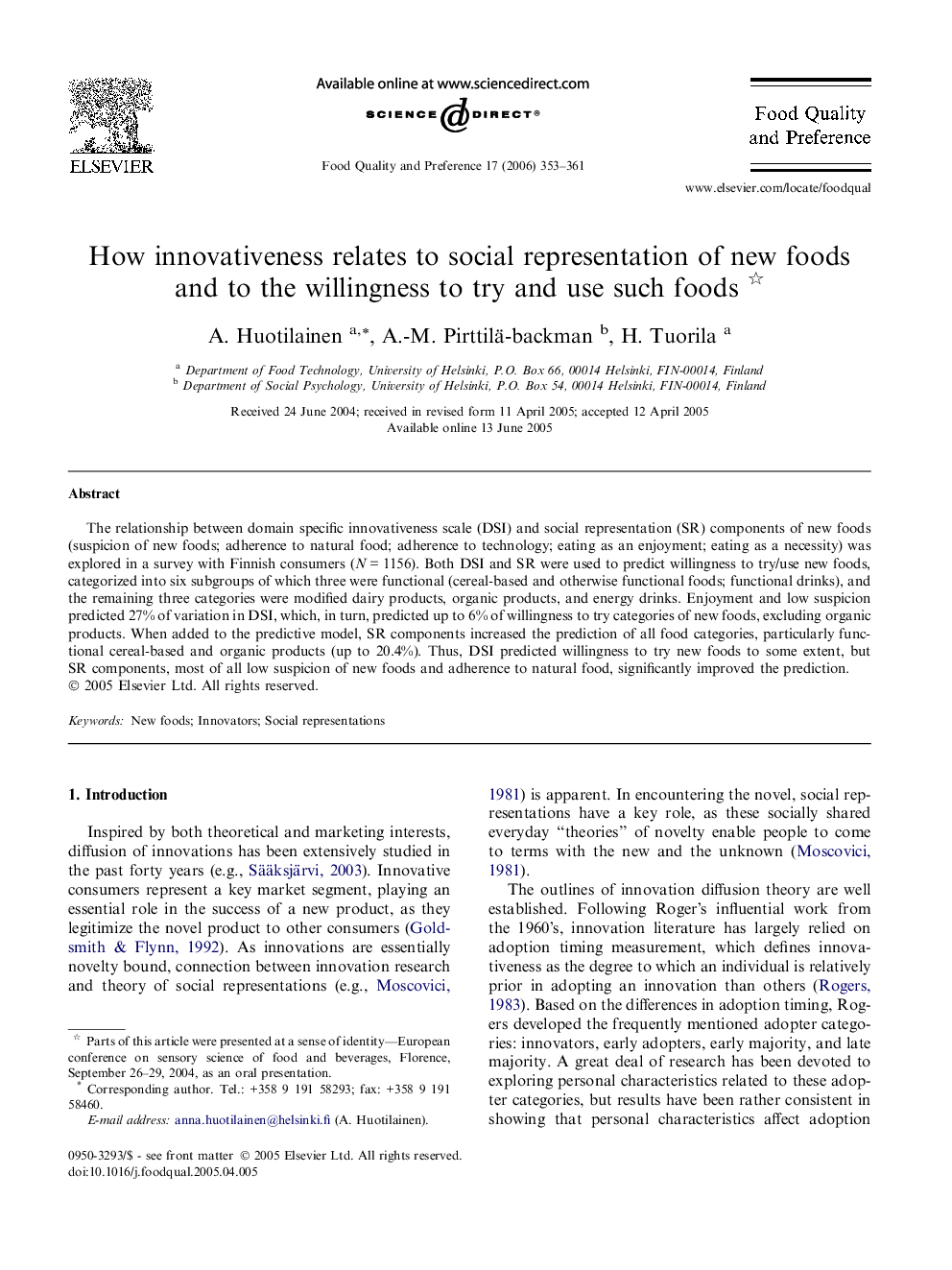| Article ID | Journal | Published Year | Pages | File Type |
|---|---|---|---|---|
| 4318303 | Food Quality and Preference | 2006 | 9 Pages |
The relationship between domain specific innovativeness scale (DSI) and social representation (SR) components of new foods (suspicion of new foods; adherence to natural food; adherence to technology; eating as an enjoyment; eating as a necessity) was explored in a survey with Finnish consumers (N = 1156). Both DSI and SR were used to predict willingness to try/use new foods, categorized into six subgroups of which three were functional (cereal-based and otherwise functional foods; functional drinks), and the remaining three categories were modified dairy products, organic products, and energy drinks. Enjoyment and low suspicion predicted 27% of variation in DSI, which, in turn, predicted up to 6% of willingness to try categories of new foods, excluding organic products. When added to the predictive model, SR components increased the prediction of all food categories, particularly functional cereal-based and organic products (up to 20.4%). Thus, DSI predicted willingness to try new foods to some extent, but SR components, most of all low suspicion of new foods and adherence to natural food, significantly improved the prediction.
